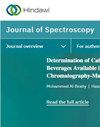He-Plasma Jet Generation and Its Application for E. coli Sterilization
IF 2.1
4区 化学
Q4 BIOCHEMICAL RESEARCH METHODS
引用次数: 3
Abstract
Atmospheric pressure plasma jet (APPJ) is a promising technique for the sterilization of pathogenic microorganisms in an ambient environment. In this work, a helium-APPJ was generated by double dielectric barrier discharge and applied to the sterilization of model microorganism in air and water. Discharge characteristics (including waveform and frequency of applied voltage), jet properties (such as feed gas flow rate, jet length, thermal effect, and optic emission spectra), and sterilization performance (in terms of clear/sterilized area, size of plaques, and sterilization efficiency) were investigated. Homogeneous helium plasma jet was generated in an energy-efficient way (18 kHz, 6 kV, 0.08 W) with a 19 mm jet and limited heating. The He-APPJ achieved good sterilization performances within very short treatment time (as short as 30 s). For surface sterilization, the area of clear zone and size of the plaque were 1809 mm2 and 48 mm, respectively, within 5 min treatment. For water sterilization, 99.8% sterilization efficiency was achieved within 5 min treatment. The optic emission spectra suggest that active species such as excited molecules, ions, and radicals were produced in the He-APPJ. The as-produced active species played important roles in the sterilization process.he等离子体射流的产生及其在大肠杆菌灭菌中的应用
常压等离子体射流(APPJ)是一种很有前途的环境微生物杀菌技术。本文采用双介质阻挡放电产生氦- appj,并将其应用于空气和水中模式微生物的灭菌。研究了放电特性(包括施加电压的波形和频率)、射流特性(如原料气流速、射流长度、热效应和光学发射光谱)和灭菌性能(在清除/灭菌面积、斑块大小和灭菌效率方面)。均匀的氦等离子体射流以一种节能的方式(18 kHz, 6 kV, 0.08 W)产生,射流为19 mm,加热有限。He-APPJ在极短的处理时间内(短至30 s)取得了良好的灭菌效果。表面灭菌处理5 min内,清除区面积为1809 mm2,菌斑大小为48 mm。对水的灭菌,处理5 min内灭菌率达到99.8%。光学发射光谱表明He-APPJ中产生了激发态分子、离子和自由基等活性物质。产生的活性菌种在杀菌过程中起着重要作用。
本文章由计算机程序翻译,如有差异,请以英文原文为准。
求助全文
约1分钟内获得全文
求助全文
来源期刊

Journal of Spectroscopy
BIOCHEMICAL RESEARCH METHODS-SPECTROSCOPY
CiteScore
3.00
自引率
0.00%
发文量
37
审稿时长
15 weeks
期刊介绍:
Journal of Spectroscopy (formerly titled Spectroscopy: An International Journal) is a peer-reviewed, open access journal that publishes original research articles as well as review articles in all areas of spectroscopy.
 求助内容:
求助内容: 应助结果提醒方式:
应助结果提醒方式:


